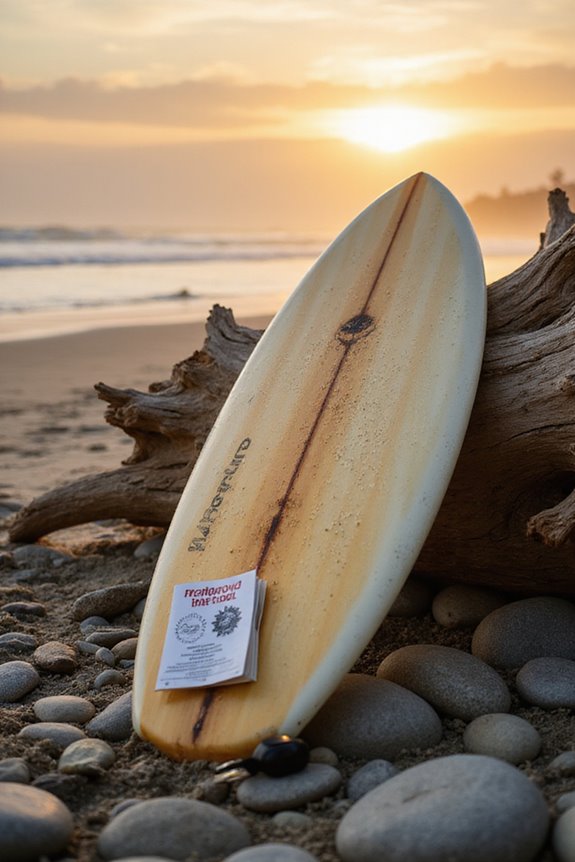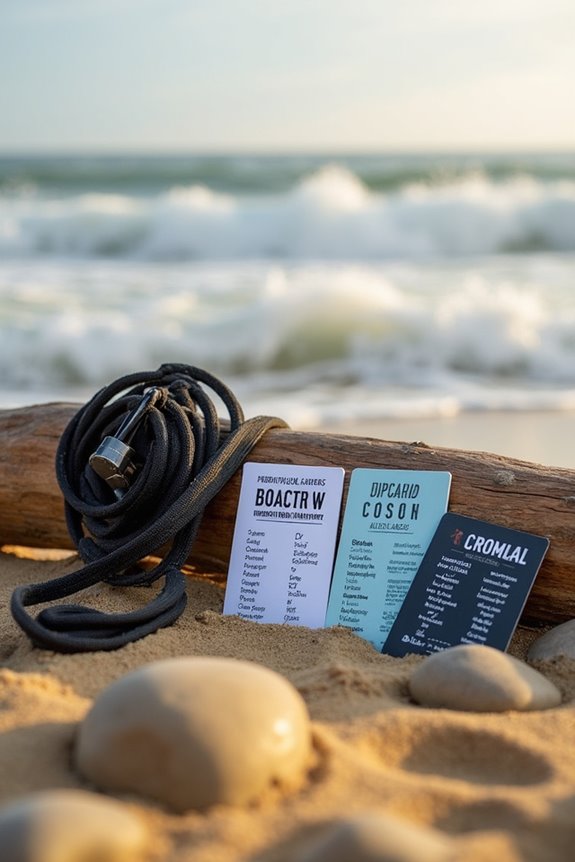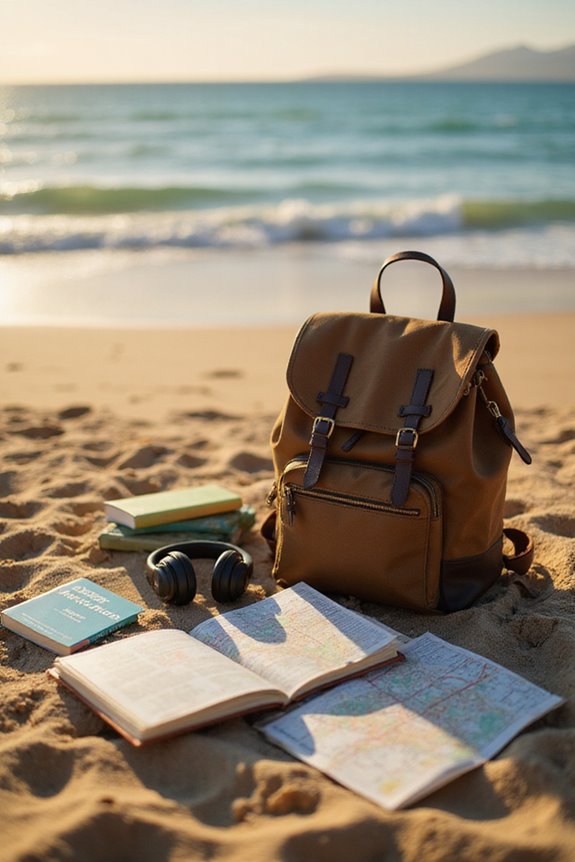Dealing with unfriendly locals can be challenging, but we can employ several strategies to improve our interactions. First, we should recognize cultural differences in greetings and social norms. Second, maintaining a calm demeanor, using clear communication, and asking clarifying questions can help us navigate misunderstandings. Additionally, developing cultural empathy boosts trust and respect. Finally, by understanding local etiquette and supporting local businesses, we can foster positive encounters. To explore more helpful tips, let’s continue to learn.
Key Takeaways
- Pause and take a deep breath before responding to avoid escalating any unfriendly interactions.
- Use clarifying questions to understand the behavior without seeming confrontational.
- Maintain eye contact and a calm tone to assert your boundaries respectfully.
- Learn about local cultural norms to better navigate social interactions and reduce misunderstandings.
- Practice empathy and patience, as perceived coldness may stem from cultural differences rather than personal unfriendliness.
Understanding Cultural Contexts of Unfriendliness
When we encounter what seems to be unfriendly behavior, it’s important to recognize that cultural contexts play a significant role in shaping social interactions. Different cultures have distinct behavioral norms that define what is considered polite or rude.
- Cultural Misinterpretations: A greeting that feels cold to us may simply be a customary expression in another culture.
- Behavioral Norms: For example, in some places, direct questions are seen as intrusive, while in others, they serve as icebreakers.
Understanding these variations helps us avoid misreading actions as unfriendliness. By being aware of local social norms, we can foster better communication and reduce the potential for misunderstandings in diverse environments, such as when engaging with the surf community in places like Goa.
Psychological Responses to Perceived Coldness

Although social interactions can vary widely across cultures, the psychological impact of perceived coldness or unfriendliness can be profound for anyone. Experiencing rejection activates brain areas associated with physical pain, leading to emotional discomfort similar to that of physical injury. This overlap can amplify feelings of sadness, anxiety, or anger, especially for those with high rejection sensitivity.
When we face unfriendliness, our self-esteem may take a hit, causing self-doubt and negative self-talk. Over time, this can create a cycle of withdrawal, where fear of future rejection stifles our willingness to connect. Developing emotional resilience becomes essential, as it helps us navigate and recover from these challenging interactions, fostering healthier social relationships in the long run. Practicing techniques like urge surfing can empower individuals to manage their emotional responses more effectively.
Practical Strategies for Navigating Interactions

Maneuvering interactions with unfriendly locals can be challenging, especially after experiencing the emotional toll of perceived coldness. To manage these situations, we can use effective reaction techniques that allow us to maintain composure.
Pause and Assess
Before responding, take a brief pause to avoid escalation.
Clarifying Questions
Use questions like, “Did you mean that?” to address unfriendly behavior without confrontation.
Boundary Communication
Clearly state our expectations for respectful interaction, ensuring that we communicate our limits.
Nonverbal Cues
Maintain eye contact and a calm tone to assert boundaries without appearing aggressive. Additionally, understanding local wind dynamics can help in choosing safe environments for interactions, promoting a more positive experience.
Enhancing Cross-Cultural Communication

Enhancing cross-cultural communication is essential for fostering understanding and cooperation among diverse groups. We can achieve this by developing cultural empathy, which builds trust and respect. Recognizing and respecting cultural norms, such as eye contact and personal space, helps prevent misunderstandings.
Additionally, improving our nonverbal communication skills is vital. We should learn local gestures and tones, adapting our body language to align with cultural expectations. Using basic local language phrases can also enhance interactions, reducing confusion. It may also be beneficial to understand the importance of safety measures when engaging in activities like surfing, as this can help build rapport with locals.
Training in intercultural communication equips us to manage conflicts more effectively. By being patient and attentive, we can create an inclusive environment that encourages dialogue and mutual respect. Ultimately, these efforts lead to more harmonious experiences with locals.
Embracing Responsible and Sustainable Tourism

As we explore the world, it’s important to recognize the impact our travel choices have on local communities and the environment. Embracing ethical tourism allows us to support local economies, create jobs, and promote cultural heritage. By engaging with communities, we can contribute our time, talent, and resources to meaningful social and environmental projects.
To travel sustainably, we should consider:
- Choosing eco-friendly accommodations and transport options.
- Supporting local businesses and artisans.
- Participating in community engagement activities, like volunteering.
These actions not only enhance our travel experiences but also align with global efforts to protect the environment and empower communities. Responsible tourism is a step toward ensuring that our adventures help rather than harm. Additionally, understanding local surf etiquette can foster a positive interaction with locals while enjoying the surfing culture.
Industry Approaches to Foster Positive Interactions
In order to foster positive interactions between travelers and local communities, the tourism industry must adopt a multifaceted approach. First, community engagement is critical. By involving local businesses, leaders, and residents in planning, we can create tourism projects that reflect community values.
Second, tourism training is essential. Educating locals about tourism’s benefits can shift perceptions and build support. Programs that enhance communication skills help locals engage effectively with travelers. We should also prioritize local hiring, ensuring that economic gains remain within the community.
Finally, community-based tourism initiatives, like arts workshops and culinary tours, allow residents to participate economically while showcasing their culture. Additionally, high-quality materials used in local crafts can enhance the visitor experience and generate interest in authentic cultural products. Together, these strategies can lead to improved relationships and a more sustainable tourism environment.
Frequently Asked Questions
What Should I Do if I Feel Personally Insulted by Locals?
When we feel personally insulted, we should focus on personal coping strategies, like maintaining calm and seeking support. Practicing cultural sensitivity can help us navigate these situations and foster understanding with locals.
How Can I Tell if Someone Is Genuinely Unfriendly or Just Culturally Reserved?
Maneuvering nuanced cultural differences, we can’t ignore body language’s silent signals. Let’s observe closely, assuming positive intent, and remember that reserved reactions often reflect customs, not hostility. Understanding brings clarity, compassion, and connection.
Are There Specific Gestures to Avoid in Certain Cultures?
When traveling, we should be mindful of cultural taboos and offensive symbols. Avoid gestures like the thumbs-up in Greece or the “A-OK” sign in Brazil, as they can lead to misunderstandings or unintentional offense.
What Are the Best Ways to Initiate Conversation With Unfriendly Locals?
When we’re unsure how to connect, using icebreaker techniques like asking about local customs can help. Simple questions about food or shared interests can create a more inviting atmosphere, easing potential tension in conversations.
How Can I Maintain a Positive Attitude Despite Negative Interactions?
To maintain a positive attitude despite negativity, we can use positive affirmations and gratitude practice. By focusing on what we’re thankful for, we shift our mindset and cultivate resilience against unpleasant interactions.







